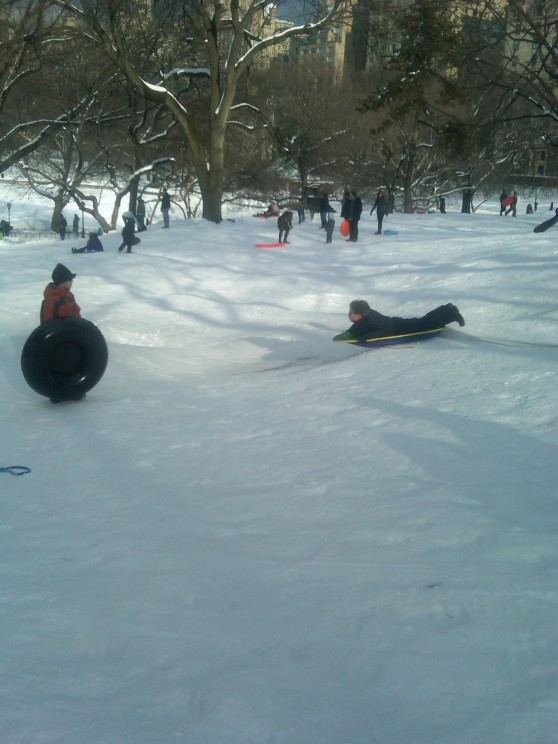By Michelle Rafferty
After a nice little afternoon in Central Park yesterday, I consulted the AIA Guide to New York City to read up on the history of the 840 acre playground (which, I learned, is larger than Monaco). I share with you now my gleanings on how the park came to be the funky hybrid of leisure and active sport it is today, as well as my own thoughts on why parks prove we all really aren’t that different.
Long before its completion (which took 20 years and ten million cartloads of stone, earth, and topsoil) New Yorkers rich and poor alike flocked to Central Park “to promenade, to see and be seen.” Originating from William Cullen Bryant’s call for a large public “pleasure ground,” its design was “simple” and “picturesque”: trees and open space, individually designed bridges, rock outcroppings, footpaths, bridle paths, the revolutionary cross-town road, and carriage drives that were curved to prevent racing.
And these plans were closely followed until the early 20th century when the automobile and active sports arrived. Since then, the gravel paths were paved, and tennis courts, playgrounds, and even a hybrid ice-rink/swimming pool have been added. Today, the New York Road Runners sponsor races of all distances in the park every month and one can buy a VIP bleacher ticket to the New York City Marathon finish line (on the west side of the park) for $75. These innovations have all added up to a sort of paradox – bikers and intense rollerblade squads do countless loops around the park’s six mile perimeter, while inside people enjoy leisurely picnics, nature hikes, and Shakespeare.
For transplants like me, Central Park provides a sweet sense of irony. Take sledding for example. I went to college in Michigan, a state where snow sticks about 5 months out of the year; here, a snow day is a holiday. That’s why, when walking by Pilgrim Hill (“the grand dame of NYC sledding institutions“) yesterday afternoon, I felt so obliged to stop and join the commotion. If it weren’t for the high-rises hovering around us, the scene could have been anywhere. Contrary to what some might think, New Yorkers sled just like everyone else. I have photographic evidence to prove it! I’ve posted some pictures below so you can a) enjoy the beauty of a snow covered Central Park and b) see that parks everywhere are threaded together by one of humanity’s most basic instincts: if there’s snow and hill, we’ll find a creative way to get down.
NEW YORKERS, WE…
GO HEADFIRST,




